Your cart is currently empty!
Tag: Cooling
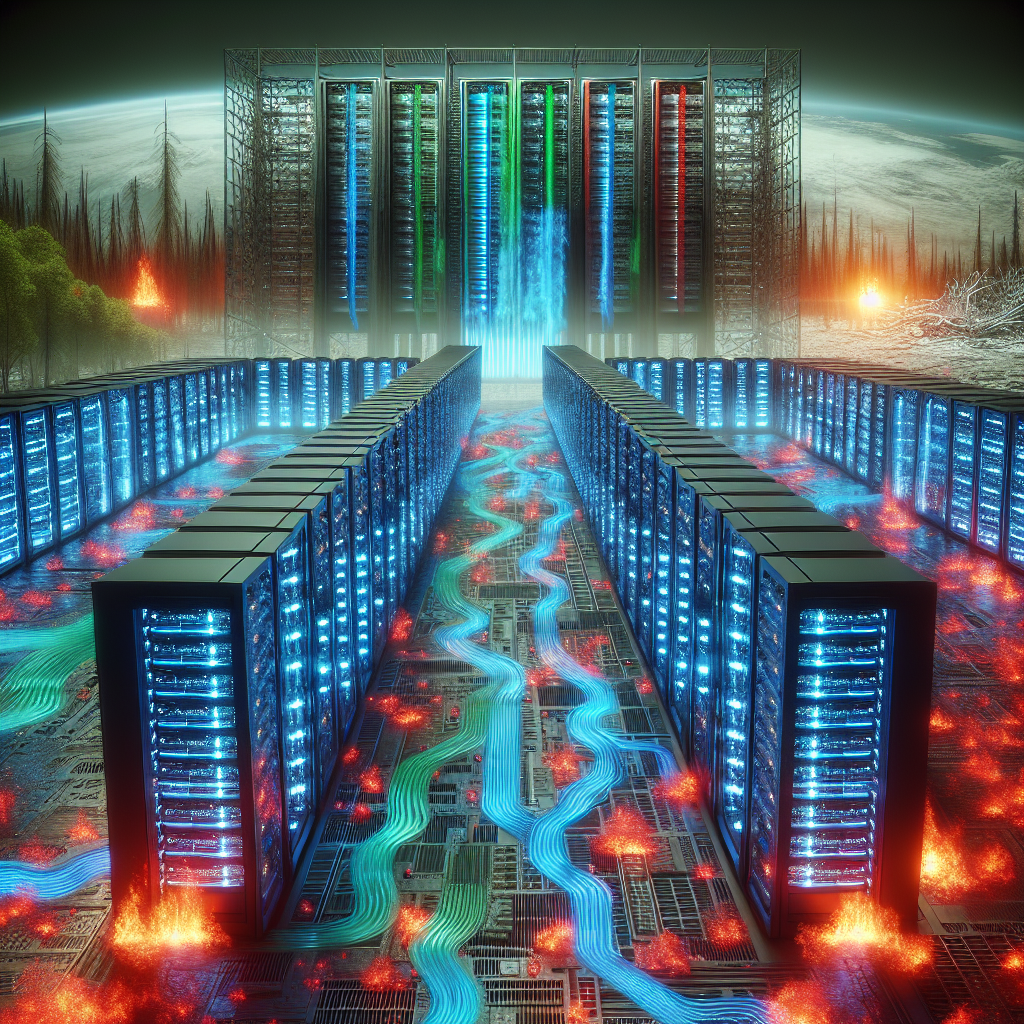
The Environmental Impact of Data Center Cooling
Data centers are essential for storing and processing vast amounts of data that power our digital world. However, the environmental impact of data centers, particularly their cooling systems, has become a growing concern.Data centers generate a significant amount of heat due to the high-powered servers and equipment they house. To prevent overheating and ensure optimal performance, cooling systems are used to regulate the temperature inside the facility. These cooling systems often consume a large amount of energy, leading to high electricity bills and a significant carbon footprint.
One of the main environmental impacts of data center cooling is the emission of greenhouse gases. The energy-intensive cooling systems release carbon dioxide and other harmful gases into the atmosphere, contributing to climate change. In fact, data centers are estimated to be responsible for around 2% of global greenhouse gas emissions.
Furthermore, the excessive energy consumption of data center cooling systems puts a strain on the power grid and can lead to power outages and blackouts. This not only disrupts the operations of the data center but also impacts the surrounding community.
In response to these environmental concerns, data center operators are increasingly looking for ways to improve the efficiency of their cooling systems. One approach is to optimize the airflow within the facility to reduce the amount of energy needed for cooling. Using hot aisle/cold aisle containment systems and implementing aisle containment curtains can help to direct the airflow more efficiently, reducing the workload on the cooling systems.
Another strategy is to use more energy-efficient cooling technologies, such as liquid cooling or free cooling systems. Liquid cooling, for example, uses water or other coolants to dissipate heat from the servers, reducing the need for traditional air conditioning units. Free cooling systems take advantage of outside air temperature to cool the data center without using mechanical refrigeration, further reducing energy consumption.
Data center operators can also explore renewable energy sources, such as solar or wind power, to offset the energy consumption of their cooling systems. By investing in renewable energy, data centers can reduce their carbon footprint and contribute to a more sustainable future.
In conclusion, the environmental impact of data center cooling is a significant issue that cannot be ignored. By implementing energy-efficient cooling technologies, optimizing airflow, and investing in renewable energy, data center operators can reduce their carbon footprint and minimize their impact on the environment. It is crucial for the industry to prioritize sustainability and take proactive measures to mitigate the environmental effects of data center cooling.
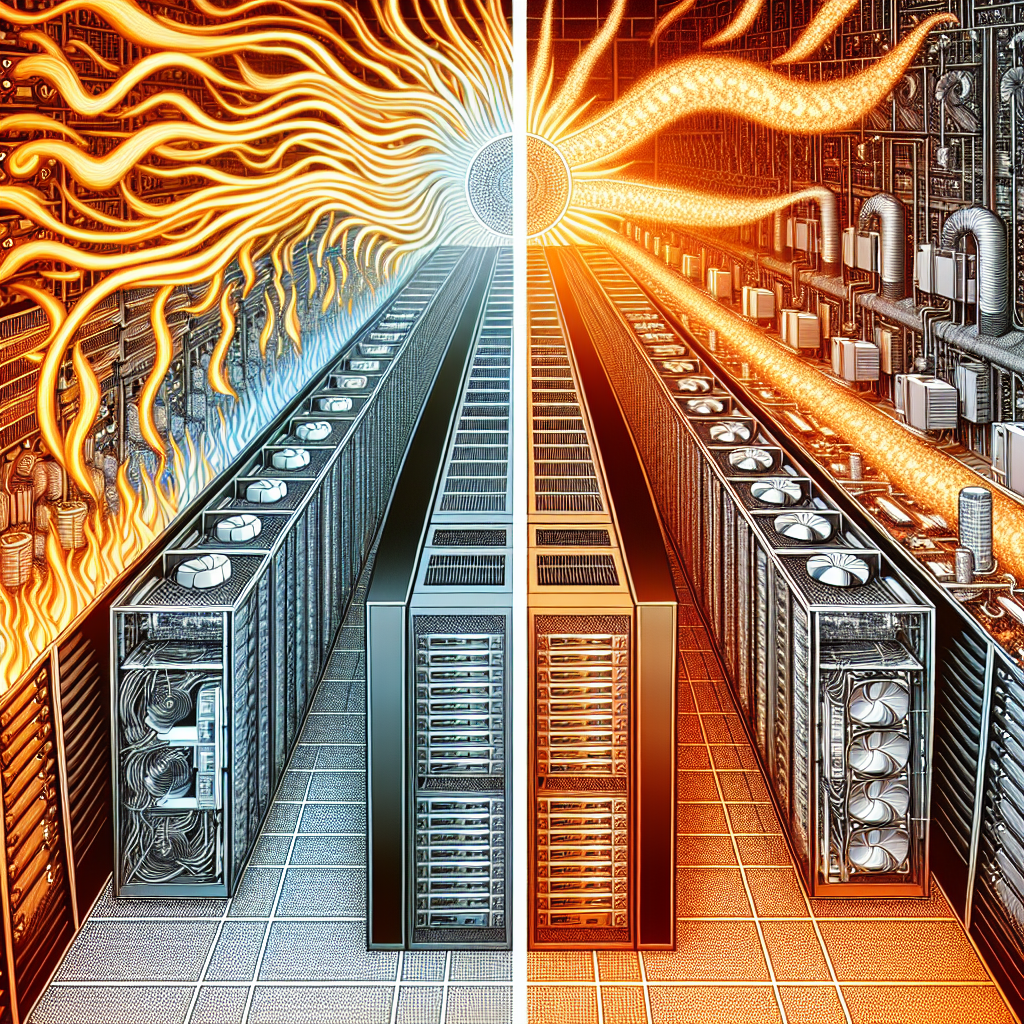
Challenges and Solutions in Data Center Cooling
Data centers play a crucial role in today’s digital world, serving as the backbone of the internet and housing the servers, storage, and networking equipment that keep businesses running smoothly. However, one of the biggest challenges faced by data centers is keeping all of that equipment cool. Data center cooling is essential to prevent overheating and ensure optimal performance of the hardware, but it can be a complex and costly endeavor. In this article, we will explore some of the challenges faced by data center cooling and discuss potential solutions.One of the main challenges in data center cooling is the sheer amount of heat generated by the servers and other equipment. As these devices work, they produce heat that must be dissipated in order to prevent damage and maintain efficiency. Traditional cooling methods, such as air conditioning, can be effective but are often inefficient and costly to operate. Additionally, as data centers continue to grow in size and complexity, the demand for cooling solutions that can keep up with the increasing heat load becomes ever more pressing.
Another challenge is the need to maintain precise temperature and humidity levels within the data center. Fluctuations in temperature and humidity can lead to equipment failure and data loss, making it essential to keep these factors in check at all times. Achieving this level of control can be difficult, especially in larger data centers where maintaining uniform conditions throughout the facility can be a challenge.
One potential solution to the challenges of data center cooling is the use of advanced cooling technologies, such as liquid cooling and containment systems. Liquid cooling involves circulating a coolant through the servers and other equipment to absorb heat more efficiently than air cooling. This can help to reduce energy consumption and improve cooling efficiency, especially in high-density data centers where air cooling may not be sufficient. Containment systems, such as hot and cold aisle containment, help to isolate the hot and cold air within the data center, preventing them from mixing and improving overall cooling effectiveness.
Another solution is the use of intelligent cooling management systems that monitor and adjust cooling levels in real-time based on the heat load and environmental conditions within the data center. These systems can help to optimize cooling efficiency and reduce energy consumption by only cooling the areas that need it, rather than running the entire cooling system at full capacity all the time.
In conclusion, data center cooling presents a number of challenges that must be addressed in order to ensure the reliable operation of critical IT infrastructure. By implementing advanced cooling technologies and intelligent cooling management systems, data center operators can improve efficiency, reduce costs, and ensure that their equipment remains cool and operational at all times. As data centers continue to grow in size and complexity, finding innovative solutions to the challenges of cooling will be essential to meeting the demands of the digital age.
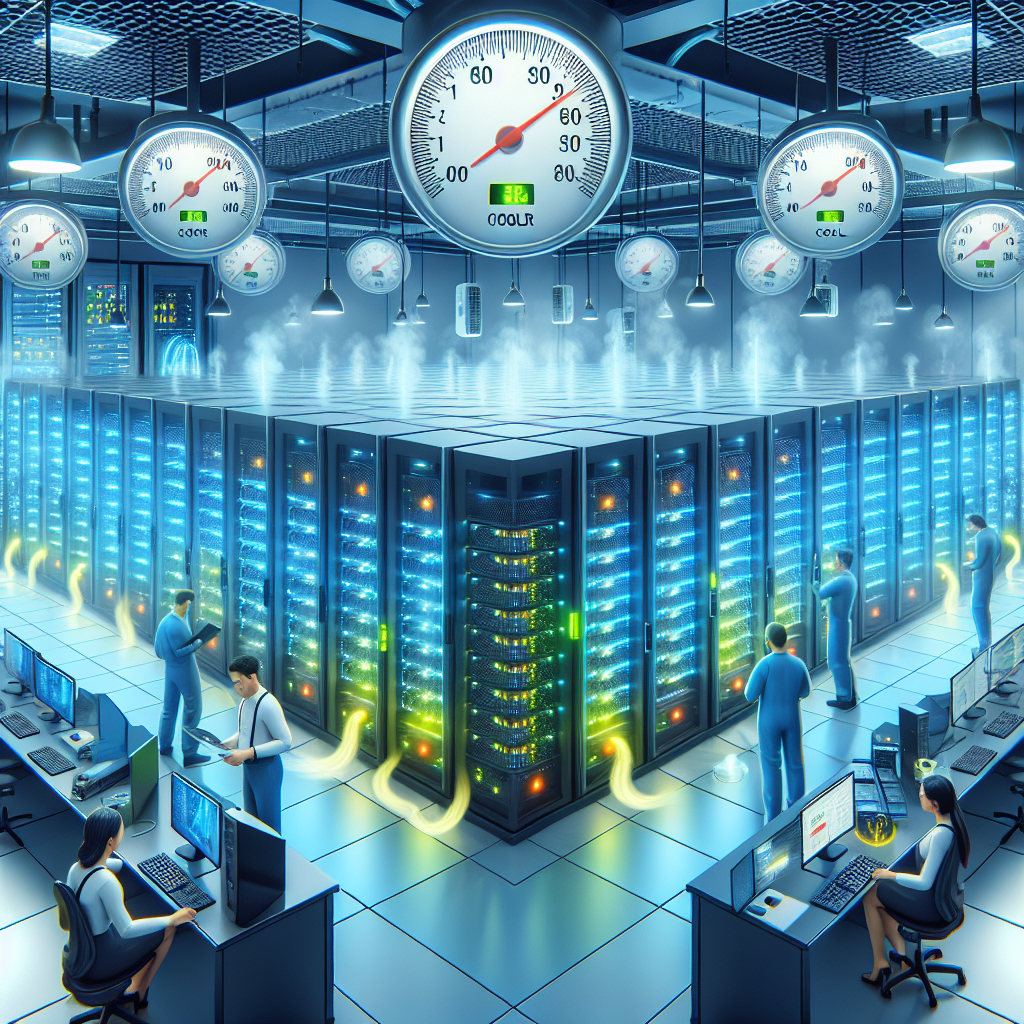
How to Optimize Data Center Cooling for Cost Savings
Data centers are essential for modern businesses, but they can also be a significant source of energy consumption and expenses. One of the biggest challenges for data center operators is keeping the servers cool to prevent overheating and ensure optimal performance. However, cooling systems can be expensive to operate, leading to high energy bills. By optimizing data center cooling, businesses can achieve cost savings while still maintaining the efficiency and reliability of their operations.Here are some key strategies to optimize data center cooling for cost savings:
1. Use Efficient Cooling Systems: Investing in energy-efficient cooling systems can significantly reduce energy consumption and costs. Choose systems that are designed to deliver precise cooling to IT equipment without overcooling the entire data center. Consider using technologies such as free cooling, which uses outside air to cool the data center instead of relying solely on mechanical cooling.
2. Implement Hot Aisle/Cold Aisle Containment: Hot aisle/cold aisle containment is a layout design that separates hot and cold air streams in the data center, improving airflow and reducing energy waste. By containing the hot air from servers and directing it back to the cooling units, data center operators can achieve more efficient cooling and lower energy costs.
3. Optimize Airflow Management: Proper airflow management is essential for efficient cooling in data centers. Ensure that air vents are not blocked, and that airflow is directed towards hot spots in the data center. Use blanking panels to cover unused rack spaces and prevent hot air recirculation. Regularly monitor airflow patterns and make adjustments as needed to optimize cooling efficiency.
4. Monitor Temperature and Humidity Levels: Monitoring temperature and humidity levels in the data center is crucial for preventing overheating and ensuring optimal performance. Use sensors to track environmental conditions and adjust cooling systems accordingly. By maintaining the right temperature and humidity levels, data center operators can reduce energy consumption and avoid unnecessary cooling costs.
5. Implement Virtualization and Consolidation: Virtualization and consolidation of servers can help reduce the overall heat load in the data center, leading to lower cooling requirements. By consolidating servers onto fewer physical machines and using virtualization technology, businesses can decrease energy consumption and cooling costs while improving resource utilization.
6. Regular Maintenance and Upgrades: Regular maintenance of cooling systems is essential to ensure optimal performance and efficiency. Clean air filters, inspect cooling units for leaks or damage, and replace outdated equipment with more energy-efficient models. Upgrading cooling systems with advanced technologies such as variable speed drives or intelligent controls can further improve efficiency and reduce costs.
By implementing these strategies, businesses can optimize data center cooling for cost savings while maintaining the reliability and performance of their operations. Investing in energy-efficient cooling systems, implementing airflow management techniques, monitoring environmental conditions, and regular maintenance are key steps to achieving cost-effective cooling solutions in data centers. With the right approach, businesses can reduce energy consumption, lower cooling costs, and improve overall efficiency in their data center operations.
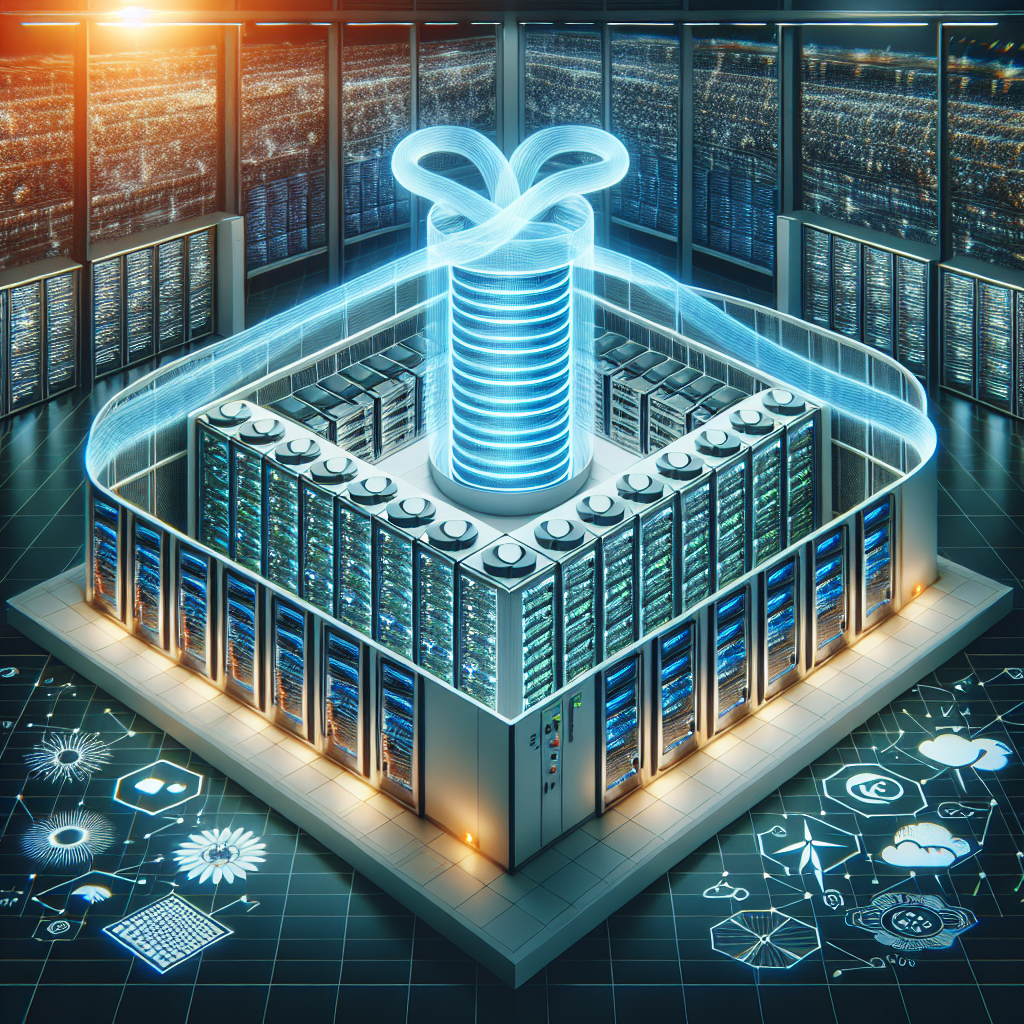
Innovative Solutions for Data Center Cooling
Data centers play a crucial role in today’s digital world, serving as the backbone for storing, processing, and distributing vast amounts of data. However, one of the biggest challenges faced by data centers is managing the heat generated by the servers and other equipment, as overheating can lead to system failures and downtime. In order to address this issue, data center operators are constantly seeking innovative solutions for cooling their facilities more efficiently and effectively.One of the most common methods of cooling data centers is through the use of air conditioning systems. However, these systems can be energy-intensive and costly to operate, leading many data center operators to explore alternative cooling technologies. One such technology is liquid cooling, which involves circulating a liquid coolant through the servers to absorb heat and then dissipating it through a heat exchanger. Liquid cooling can be more energy-efficient than traditional air conditioning systems, as liquids have a higher heat capacity and can remove heat more effectively.
Another innovative solution for data center cooling is the use of free cooling, which takes advantage of natural sources of cooling such as ambient air or ground water. By using outside air or ground water to cool the data center instead of relying solely on mechanical systems, data center operators can significantly reduce their energy consumption and operating costs. Free cooling systems can be particularly effective in regions with cooler climates or where there is access to natural sources of cold water.
In addition to liquid cooling and free cooling, data center operators are also exploring the use of advanced cooling technologies such as direct-to-chip cooling and immersion cooling. Direct-to-chip cooling involves placing cooling modules directly on the processors to remove heat at the source, while immersion cooling submerges the servers in a non-conductive liquid coolant to dissipate heat more efficiently. These technologies can help data centers achieve higher levels of cooling efficiency and reduce their environmental impact.
Furthermore, data center operators are increasingly turning to data center infrastructure management (DCIM) software to optimize their cooling systems and improve overall energy efficiency. DCIM software allows operators to monitor and control various aspects of their data center environment, including temperature, humidity, and airflow, in real-time. By using DCIM software to analyze data and make informed decisions, data center operators can identify opportunities for improving cooling efficiency and reducing energy consumption.
In conclusion, innovative solutions for data center cooling are essential for ensuring the reliability and sustainability of data centers in the digital age. By exploring technologies such as liquid cooling, free cooling, direct-to-chip cooling, and DCIM software, data center operators can achieve higher levels of cooling efficiency, reduce energy consumption, and lower operating costs. As the demand for data center services continues to grow, it is crucial for operators to invest in cutting-edge cooling technologies to meet the challenges of today’s data-driven world.
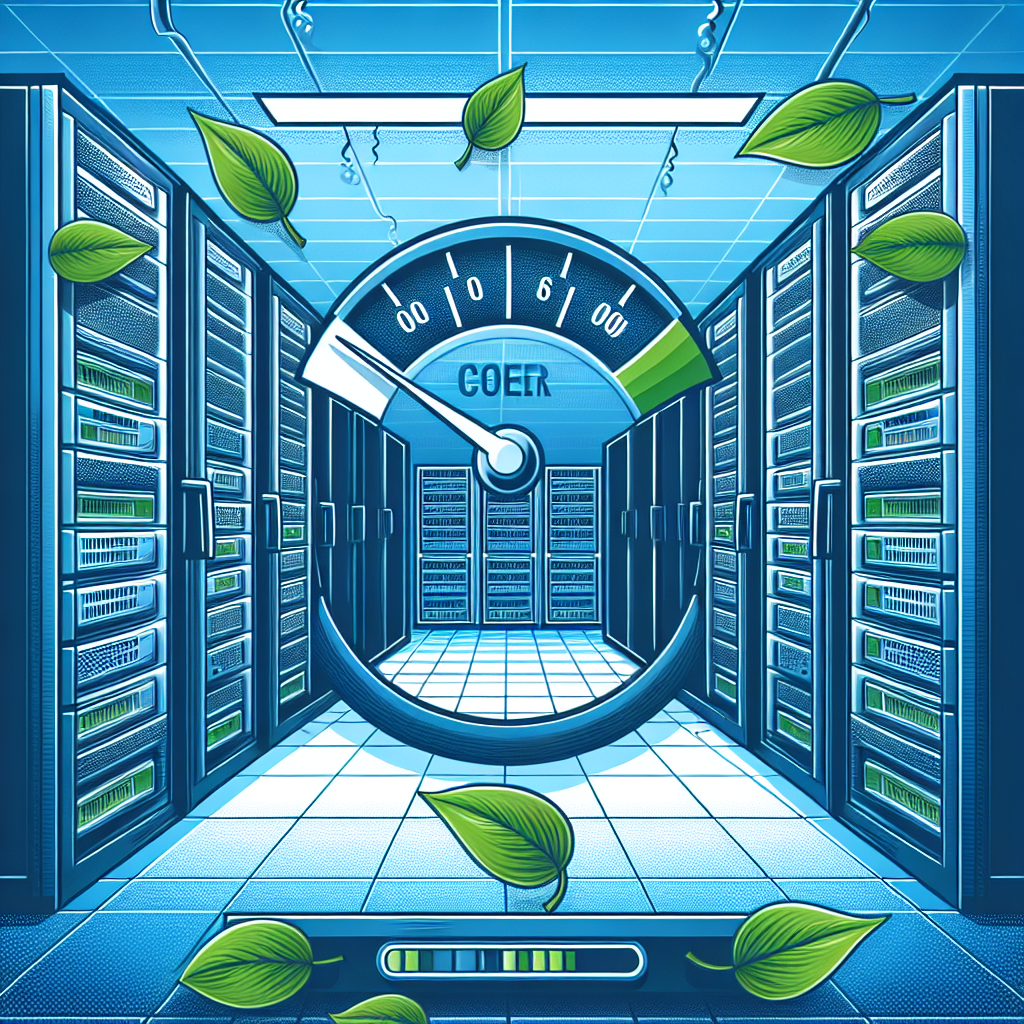
Maximizing Energy Efficiency in Data Center Cooling
Data centers are essential for storing and processing large amounts of data for businesses and organizations. However, they also consume a significant amount of energy to keep the servers and equipment cool. In fact, cooling accounts for a large portion of a data center’s energy usage, making it a key area to focus on when maximizing energy efficiency.There are several strategies that data center operators can implement to improve the energy efficiency of their cooling systems. These strategies not only reduce energy consumption and costs but also help to lessen the environmental impact of data centers.
One of the most effective ways to maximize energy efficiency in data center cooling is to optimize airflow management. By ensuring that cold air is directed to where it is needed most, and hot air is removed efficiently, data center operators can reduce the energy required to cool the servers. This can be achieved through the use of containment systems, such as hot and cold aisle containment, to separate the hot and cold air streams and prevent them from mixing.
Another important strategy is to utilize free cooling whenever possible. Free cooling takes advantage of external air temperatures to help cool the data center, reducing the need for mechanical cooling systems. This can be achieved through the use of air-side economizers, which bring in outside air to cool the data center when ambient temperatures are low enough. By implementing free cooling strategies, data center operators can significantly reduce energy consumption and costs.
In addition to optimizing airflow management and utilizing free cooling, data center operators can also improve energy efficiency by upgrading to more energy-efficient cooling equipment. This includes replacing older, inefficient cooling systems with newer, more energy-efficient models, as well as implementing technologies such as variable speed drives and smart controls to optimize the performance of the cooling systems.
Regular maintenance and monitoring of cooling systems are also essential for maximizing energy efficiency in data center cooling. By keeping equipment well-maintained and monitoring performance metrics, data center operators can identify and address any issues that may be impacting energy efficiency.
Overall, maximizing energy efficiency in data center cooling is crucial for reducing energy consumption, costs, and environmental impact. By implementing strategies such as optimizing airflow management, utilizing free cooling, upgrading to more energy-efficient equipment, and maintaining and monitoring cooling systems, data center operators can achieve significant energy savings and improve the overall sustainability of their operations.
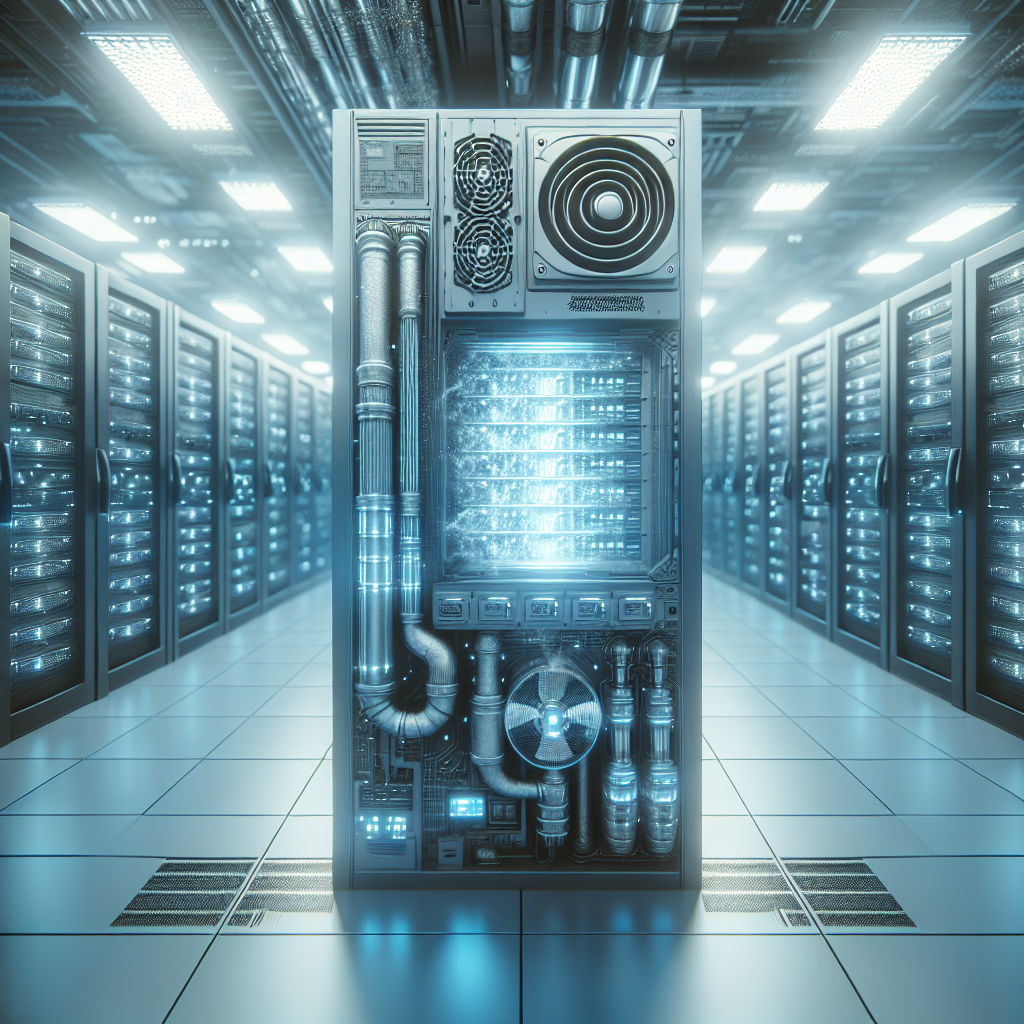
Emerging Technologies in Data Center Cooling: What You Need to Know
Data center cooling is a critical aspect of maintaining the efficiency and reliability of data centers, which are essential for storing and processing large amounts of data for businesses and organizations. With the increasing demand for data storage and processing capabilities, data center cooling technologies are constantly evolving to meet the needs of the industry.Emerging technologies in data center cooling are revolutionizing the way data centers are cooled, making them more efficient, cost-effective, and environmentally friendly. Here are some of the key technologies that you need to know about:
1. Liquid cooling: Liquid cooling systems use water or other liquid substances to cool servers and other components in data centers. This technology is becoming increasingly popular as it is more efficient than traditional air cooling systems, reducing energy consumption and lowering operating costs. Liquid cooling also allows for higher power densities and better heat dissipation, making it ideal for high-performance computing environments.
2. Direct-to-chip cooling: Direct-to-chip cooling systems directly cool the processors and other components of servers, eliminating the need for air conditioning units and reducing energy consumption. This technology enables data centers to operate at higher temperatures without compromising performance, leading to significant energy savings and reduced carbon emissions.
3. Immersion cooling: Immersion cooling involves submerging servers and other components in a dielectric fluid to dissipate heat. This technology is highly efficient and can reduce cooling costs by up to 95% compared to traditional air cooling systems. Immersion cooling also eliminates the need for air conditioning units, reducing energy consumption and carbon emissions.
4. Indirect evaporative cooling: Indirect evaporative cooling systems use a heat exchanger to cool the air inside data centers without introducing moisture, making them ideal for humid environments. This technology is highly energy-efficient and can significantly reduce cooling costs while maintaining optimal temperature and humidity levels.
5. Artificial intelligence (AI) and machine learning: AI and machine learning technologies are being used to optimize data center cooling systems by analyzing data in real-time and adjusting cooling settings accordingly. These technologies enable data centers to operate more efficiently, reducing energy consumption and improving overall performance.
In conclusion, emerging technologies in data center cooling are transforming the way data centers are cooled, making them more efficient, cost-effective, and environmentally friendly. By staying informed about these technologies and implementing them in your data center, you can optimize cooling systems, reduce energy consumption, and improve overall performance. Stay ahead of the curve and invest in these innovative cooling technologies to ensure the success and sustainability of your data center operations.
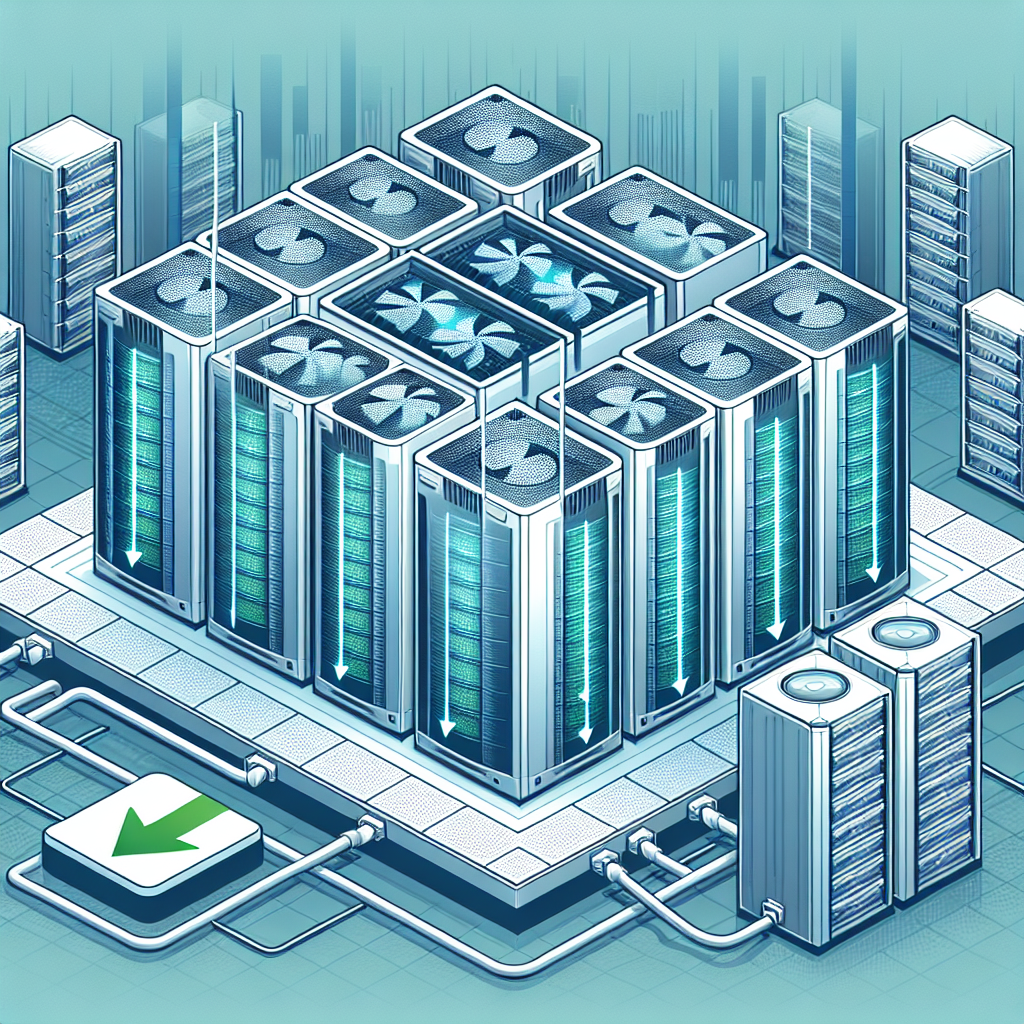
Best Practices for Managing Data Center Cooling Costs
Managing data center cooling costs is a critical aspect of running a successful and efficient data center. With the increasing demand for data storage and processing power, the need for effective cooling systems has become more important than ever. In order to optimize cooling costs and ensure the longevity of your data center equipment, it is essential to implement best practices for managing data center cooling costs.1. Implement Hot Aisle/Cold Aisle Containment: One of the most effective ways to reduce cooling costs is to implement hot aisle/cold aisle containment in your data center. This design segregates the hot and cold air streams, preventing them from mixing and reducing the overall cooling load on your equipment. By implementing this containment system, you can significantly reduce cooling costs and improve the efficiency of your data center cooling system.
2. Optimize Airflow Management: Proper airflow management is essential for maintaining optimal cooling efficiency in your data center. Ensure that your equipment is positioned in a way that allows for efficient airflow, and consider using blanking panels and cable management systems to prevent airflow obstructions. By optimizing airflow management, you can reduce cooling costs and improve the overall efficiency of your data center cooling system.
3. Utilize Economizer Cooling: Economizer cooling systems use outside air to cool data center equipment, reducing the need for mechanical cooling systems and lowering overall cooling costs. By implementing economizer cooling systems in your data center, you can take advantage of free cooling opportunities and reduce your energy consumption.
4. Utilize Data Center Infrastructure Management (DCIM) Software: DCIM software can help you monitor and manage your data center cooling systems more effectively. By using DCIM software, you can track cooling efficiency, identify areas for improvement, and optimize cooling systems for maximum efficiency. This can help you reduce cooling costs and improve the overall performance of your data center.
5. Regular Maintenance and Upgrades: Regular maintenance and upgrades are essential for ensuring the efficiency of your data center cooling systems. Make sure to clean and inspect cooling equipment regularly, replace filters as needed, and upgrade outdated equipment to improve efficiency. By investing in regular maintenance and upgrades, you can extend the lifespan of your cooling systems and reduce cooling costs in the long run.
In conclusion, managing data center cooling costs is essential for running a successful and efficient data center. By implementing best practices such as hot aisle/cold aisle containment, optimizing airflow management, utilizing economizer cooling, using DCIM software, and investing in regular maintenance and upgrades, you can reduce cooling costs and improve the overall efficiency of your data center cooling systems. By following these best practices, you can ensure that your data center remains cool, efficient, and cost-effective for years to come.
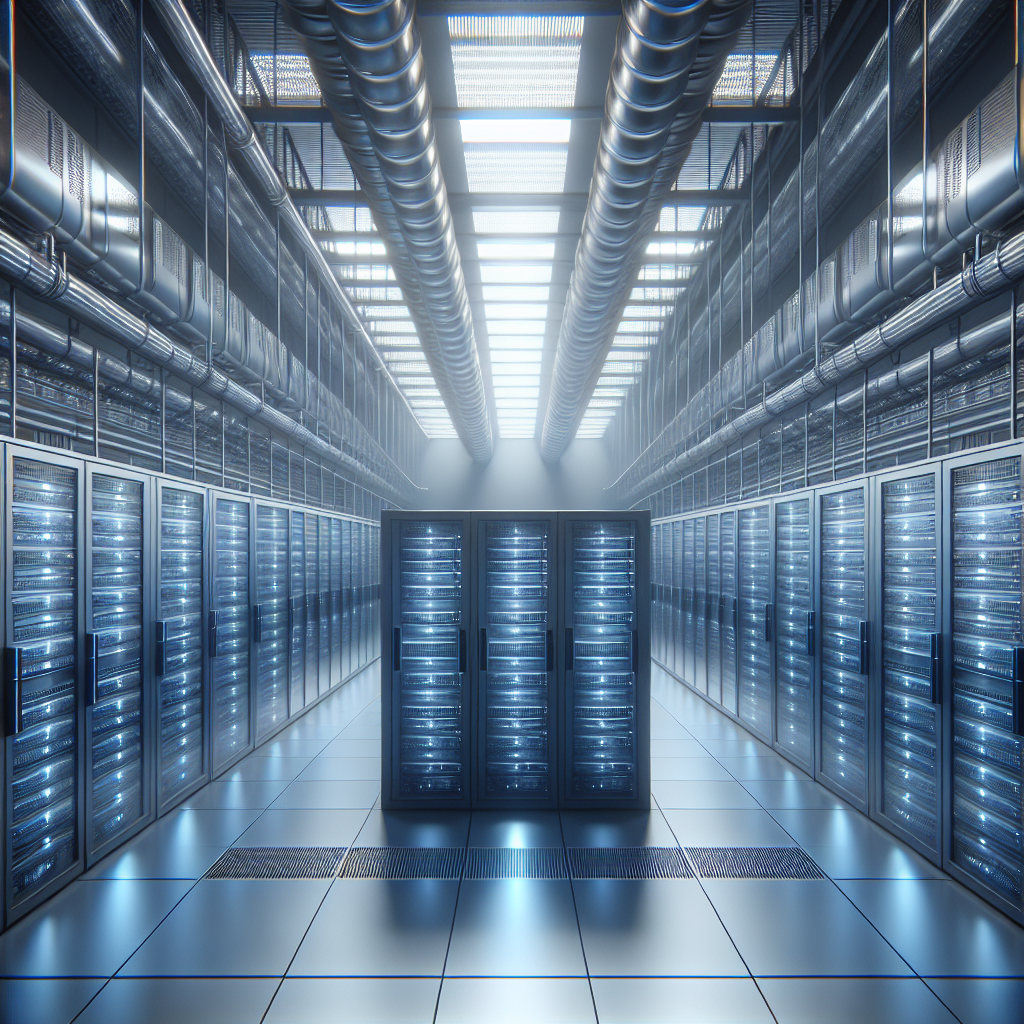
Choosing the Right Cooling System for Your Data Center
When it comes to running a data center, one of the most critical components to consider is the cooling system. Data centers generate a significant amount of heat due to the high-powered servers and equipment they house. Without proper cooling, these systems can overheat, leading to downtime, equipment damage, and potential data loss.Choosing the right cooling system for your data center is essential to ensure optimal performance and reliability. There are several factors to consider when selecting a cooling system, including the size of your data center, the type of equipment you have, and your budget.
One of the most common cooling systems used in data centers is a precision air conditioning unit. These units are designed to control temperature and humidity levels within the data center to keep equipment running efficiently. Precision air conditioning units are typically more expensive to install and maintain, but they offer precise control over the environment, making them ideal for larger data centers with high-density equipment.
Another popular option for cooling data centers is the use of chilled water systems. These systems use water to cool the air within the data center, providing a cost-effective and energy-efficient cooling solution. Chilled water systems are often used in conjunction with air handlers to distribute cool air throughout the facility. They are suitable for medium to large data centers and offer scalability as your data center grows.
For smaller data centers or those on a budget, a simple air conditioning unit may be sufficient to keep equipment cool. These units are easy to install and maintain, making them a cost-effective option for smaller operations. However, they may not offer the same level of precision control as more advanced cooling systems.
In addition to the type of cooling system, it’s essential to consider the location of your data center and the climate in which it operates. For example, data centers located in hot and humid environments may require additional cooling capacity to maintain optimal operating conditions. Conversely, data centers in cooler climates may be able to take advantage of ambient air cooling to reduce energy costs.
Ultimately, the right cooling system for your data center will depend on your specific needs and requirements. It’s essential to work with a qualified HVAC professional to assess your data center’s cooling needs and recommend the best solution for your facility. By choosing the right cooling system, you can ensure the reliability and performance of your data center for years to come.
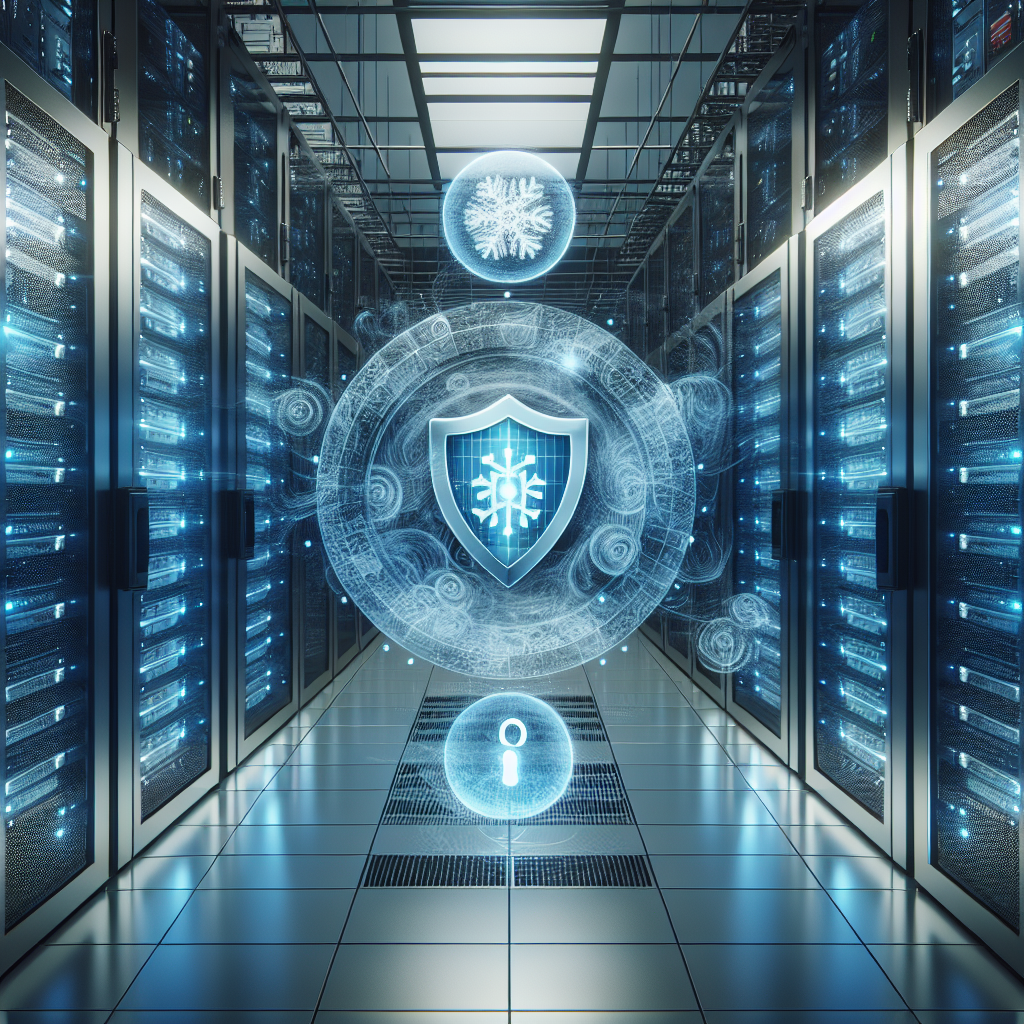
From Cooling Systems to Security Protocols: A Comprehensive Guide to Data Center Servicing
Data centers are the backbone of modern technology, powering everything from social media platforms to e-commerce websites. As the demand for data storage and processing continues to grow, the servicing and maintenance of these facilities becomes increasingly crucial.From cooling systems to security protocols, there are a variety of factors that must be considered when servicing a data center. In this comprehensive guide, we will explore the key components of data center servicing and provide tips for ensuring optimal performance and reliability.
Cooling Systems
One of the most critical aspects of data center servicing is the cooling system. Data centers generate a significant amount of heat through the operation of servers and other hardware, and if this heat is not properly managed, it can lead to equipment failure and downtime.
There are several types of cooling systems commonly used in data centers, including air conditioning units, precision air conditioners, and liquid cooling systems. It is essential to regularly inspect and maintain these systems to ensure they are operating efficiently and effectively.
Regular cleaning of air filters, coils, and vents is essential to prevent dust and debris from clogging the system. Additionally, monitoring temperature and humidity levels in the data center can help identify potential issues before they escalate.
Security Protocols
Data centers house sensitive and valuable information, making security a top priority. Implementing robust security protocols is essential to protect against cyber threats and unauthorized access.
Physical security measures, such as access control systems, surveillance cameras, and biometric authentication, can help prevent unauthorized individuals from entering the data center. It is also important to regularly update and patch software to address vulnerabilities and ensure data is encrypted both in transit and at rest.
Regular security audits and penetration testing can help identify weaknesses in the data center’s security infrastructure and address them before they are exploited by malicious actors.
Power Distribution
Data centers require a reliable power supply to ensure uninterrupted operation. Power distribution units (PDUs) are used to distribute electricity to servers and other hardware, and it is important to regularly inspect and maintain these units to prevent power outages.
Regularly testing backup generators and uninterruptible power supply (UPS) systems can help ensure they are ready to kick in during a power outage. It is also important to monitor power usage and implement energy-efficient practices to reduce costs and minimize environmental impact.
Conclusion
Data center servicing is a complex and multifaceted task that requires careful attention to detail and proactive maintenance. By regularly inspecting and maintaining cooling systems, implementing robust security protocols, and ensuring reliable power distribution, data center operators can maximize uptime and protect valuable information.
In today’s digital age, data centers play a crucial role in supporting the technologies that power our everyday lives. By following the tips outlined in this comprehensive guide, data center operators can ensure their facilities are operating at peak performance and are prepared to meet the demands of an ever-evolving technological landscape.
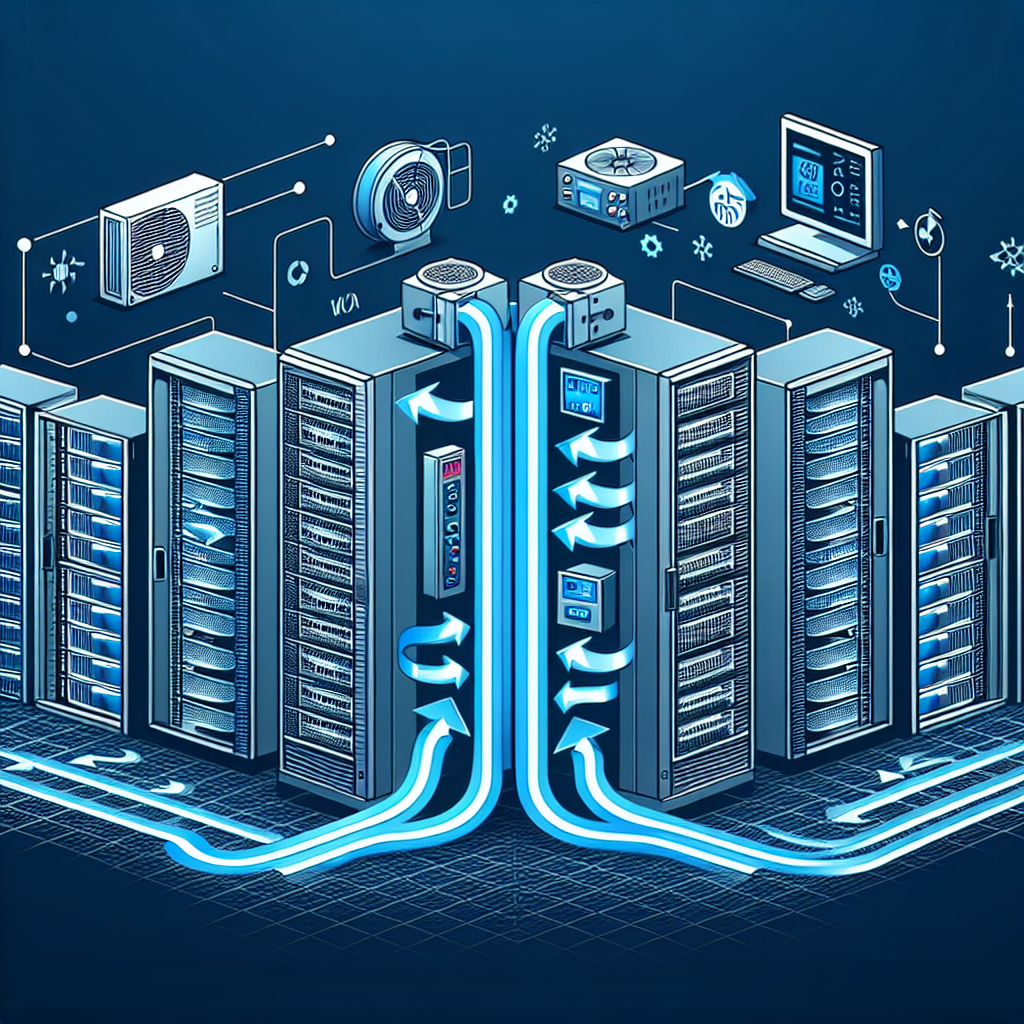
The Impact of Cooling on Data Center Performance and Reliability
In today’s digital age, data centers play a crucial role in storing and processing vast amounts of information for businesses and individuals alike. With the increasing demand for faster and more efficient data processing, the issue of cooling has become a critical factor in ensuring the performance and reliability of these facilities.The impact of cooling on data center performance and reliability cannot be overstated. As data centers continue to grow in size and complexity, the amount of heat generated by the servers and other equipment housed within them also increases. Without proper cooling systems in place, this heat can quickly accumulate, leading to overheating and potential equipment failure.
One of the key challenges in maintaining optimal cooling in data centers is achieving the delicate balance between keeping the equipment at a safe operating temperature and minimizing energy consumption. Traditional cooling methods, such as air conditioning, can be effective but are often inefficient and costly to maintain. As a result, many data centers are turning to more innovative cooling solutions, such as liquid cooling and free cooling, to address these challenges.
Liquid cooling involves using a liquid coolant, such as water or a refrigerant, to absorb and dissipate heat from the servers. This method is more efficient than air cooling and can help reduce energy costs in the long run. Free cooling, on the other hand, takes advantage of natural cooling sources, such as outside air or groundwater, to cool the data center without the need for mechanical cooling systems.
By implementing these advanced cooling technologies, data centers can not only improve the performance and reliability of their equipment but also reduce their environmental impact. By reducing energy consumption and minimizing the use of harmful refrigerants, data centers can help lower their carbon footprint and contribute to a more sustainable future.
In conclusion, the impact of cooling on data center performance and reliability is undeniable. As data centers continue to evolve and expand, it is crucial for businesses to invest in efficient cooling systems that can effectively manage heat while minimizing energy consumption. By doing so, they can ensure the smooth operation of their data centers and maintain the integrity of the information stored within them.
